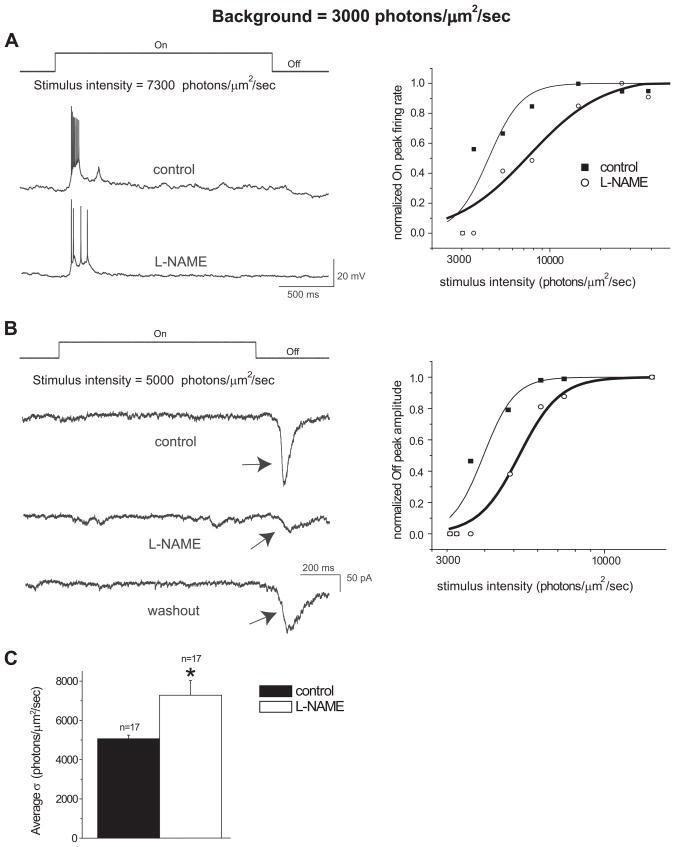Figure 1.
L-NAME reduced the sensitivity of RGCs to light stimuli under light adaptation with the background light intensity at 3000 photons/μm2/sec. A: Visual responses obtained by whole-cell current-clamp recordings from an On ganglion cell. When stimulated with the same light intensity, L-NAME (100μM) reduced the average peak firing rate of the On response. The light onset and offset are indicated above the recording traces. The normalized response-intensity curves from the On cell in the left panel is represented in the right panel. The data sets were fitted with the Michaelis-Menten equation. B: Visual responses obtained by whole-cell voltage-clamp recordings from an Off ganglion cell. L-NAME reduced the peak amplitude of the Off response, as indicated by arrows, and after a 20 minute washout of L-NAME partial recovery of the peak amplitude of the Off response was obtained. The normalized response-intensity curves from the Off cell in the left panel is represented in the right panel. The data sets were fitted with the Michaelis-Menten equation. C: The average intensity that evoked a half-maximal response (σ) was significantly higher following the L-NAME treatment from the 17 cells tested (*p<0.05, paired t-test). Error bars represent ± SE.

